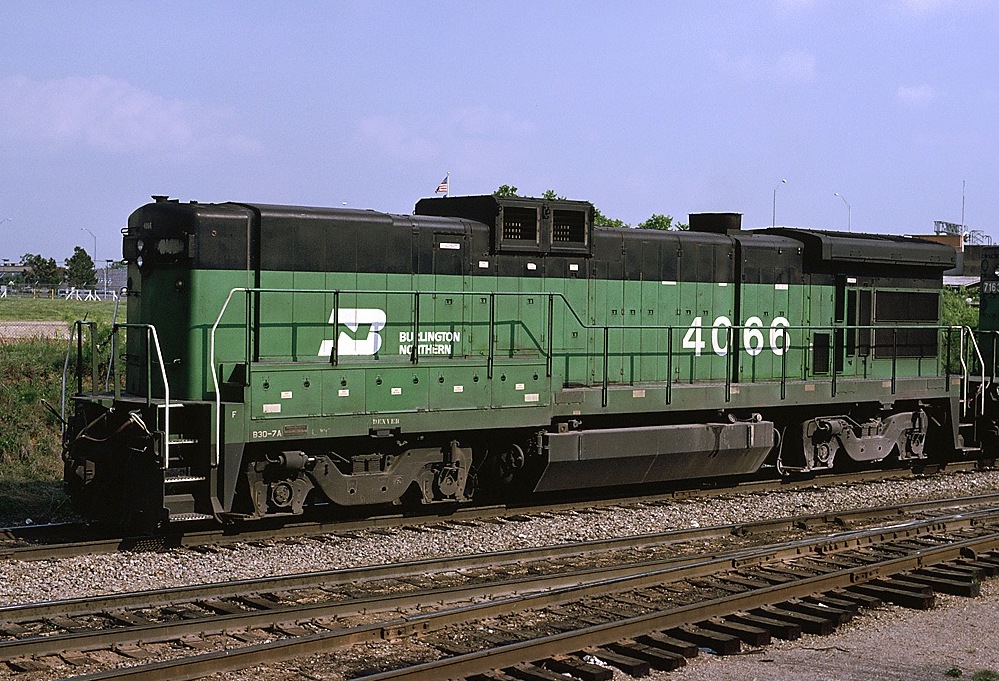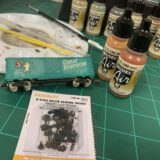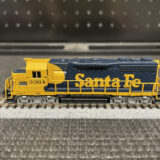What’s A B Unit?
I’ve been asked on multiple occasions, “what’s a B unit?” when referring to locomotives pulling both passenger and freight trains. Earlier diesel locomotives didn’t have either the horsepower or torque of more modern diesel engines, so they were often delivered in “sets” that includes A units – or units with a cab and operating controls, and B units (also called “booster” units) – support engines identical in terms of the power unit, but without the engineer’s cab. This was done to save costs, as these sets of motive power would only have one engineer and fireman per lashup or combined set of engines.

B Units on the Fallen Flags project
The Fallen Flags Junction layout will have at least a few B units on the property, typically used as secondary power, and all near the end of their operational lives. As an example, there will be an old Burlington Route B unit in the Oregon yard system, dirty and well worn.
The first Burlington F3’s arrived in October 1947 as four-unit sets 116-121.These were delivered as Phase II F3’s (F2’s and Phase I F3’s being identical) with high fan shrouds, high headlights and no Mars light in the nose door, large angled number boards, and two portholes with screening covering the four square vent openings between the portholes. The CB&Q purchased 58 A units and 52 B units. The Southern Pacific purchased 80 A and 80 B units. The ATSF purchased 46 A units and 47 B units. These represent the various Fallen Flags lines that utilized F3 B units.
Many of these early units were delivered in silver and were intended for passenger train service, including the (at the time) new California Zephyr train. Most only lasted in passenger service for four or five years, and after being re-geared for lower speeds and higher traction, found new lives pulling heavy road freights across the Burlington network. Those units that were re-assigned to freight service kept their passenger service numbers, typically to the end of their production lives.
 Typically, when these sets of locomotives were delivered to their respective railroad owners, they were kept together as a complete set of engines. Over time, as the units ages and their purposes changed, these sets were often borken up, with A units being utilized for all types of service, while B units were often added to freight trains in need of additional power. EMD developed four primary phases of F3s, with a short run of F5 variants, prior to the end of production in February 1949. Remarkably, there are a number of A units, and a few B units that remain in service, both overseas and in the U.S. on tourist and short line routes.
Typically, when these sets of locomotives were delivered to their respective railroad owners, they were kept together as a complete set of engines. Over time, as the units ages and their purposes changed, these sets were often borken up, with A units being utilized for all types of service, while B units were often added to freight trains in need of additional power. EMD developed four primary phases of F3s, with a short run of F5 variants, prior to the end of production in February 1949. Remarkably, there are a number of A units, and a few B units that remain in service, both overseas and in the U.S. on tourist and short line routes.It’s important to note that the concept of booster, or B units was not limited to EMD “streamliner” locomotives. Many makes of engines offered cabless variations, such as the green Burlington Northern unit photo shown as part of this blog post.





